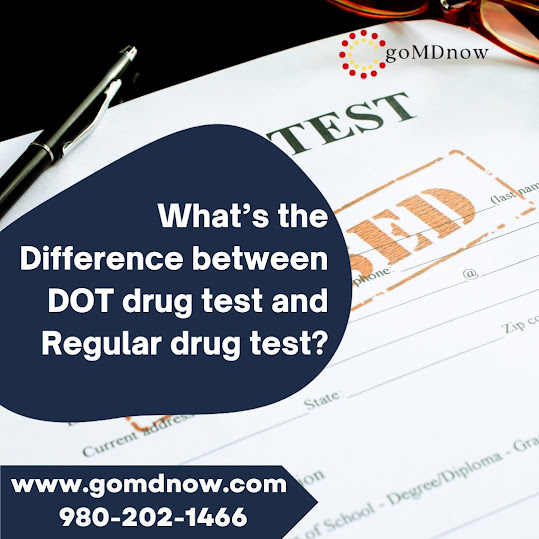New CDL Drug Testing Requirements 2023
The U.S. Department of Transportation (DOT) regulates the drug and alcohol testing of commercial driver’s license (CDL) holders who operate commercial motor vehicles (CMVs). The DOT’s drug and alcohol testing program aims to ensure the safety of the public and prevent accidents caused by impaired drivers. The DOT’s drug and alcohol testing rules apply to CDL holders and their employers who are subject to the Federal Motor Carrier Safety Administration (FMCSA) regulations.
Types of Drug and Alcohol Tests
The DOT’s drug
and alcohol testing program requires CDL holders and their employers to follow
certain procedures for testing, frequency of tests, and substances tested for.
The DOT tests for five classes of drugs: marijuana,
cocaine,
opiates, amphetamines,
and phencyclidine
(PCP). The DOT also tests for alcohol using breath or
saliva tests. The DOT’s drug and alcohol testing program includes the following
types of tests:
·Pre-employment: An employer
must receive a negative
drug test result before permitting a CDL holder to operate a CMV. (§382.301)
·Post-accident: Drug and alcohol tests may be required after crashes according to the following chart:
|
Type of accident involved |
Citation issued |
Test must be performed by
employer |
|
Human fatality |
Yes or No |
Drug and Alcohol |
|
Bodily injury with immediate medical treatment away from the scene |
Yes |
Drug and Alcohol |
|
Disabling damage to any motor vehicle requiring tow away |
Yes |
Drug and Alcohol |
·Random: CDL
holders must be randomly tested throughout the year. The minimum annual
percentage rate for random drug testing is 50% of the average number of driver
positions, and the minimum annual percentage rate for random alcohol testing is
10% of the average number of driver positions. (§382.305)
Suggested:
DOT
Random Testing Pool vs Stand-Alone Pool
·Reasonable
suspicion: CDL holders must be tested when a trained supervisor or company
official has reasonable
suspicion that the driver is under the influence of drugs or alcohol
based on specific, contemporaneous, articulable observations concerning the
driver’s appearance, behavior, speech, or body odors. (§382.307)
·Return-to-duty:
CDL holders who have violated the DOT’s drug and alcohol testing rules must
undergo a return-to-duty test before resuming safety-sensitive
functions. The test result must be negative and the driver must also
complete the required evaluation and treatment by a substance abuse
professional. (§382.309)
·Follow-up: CDL
holders who have returned to duty
after a violation must
be subject to unannounced follow-up testing for at least 12 months and up to 60
months as determined by a substance abuse professional. The driver must have at
least six follow-up tests in the first 12 months. (§382.311)
Oral Fluid Testing
On May 2,
2023, the DOT published a final rule amending its regulated industry drug
testing program to allow for oral fluid testing. Oral fluid testing is a type
of drug test that uses the donor’s saliva to test for controlled substances.
Oral fluid testing offers several advantages over urine testing, such as:
·Oral fluid
collection is directly observed by a laboratory technician, making the sample
less susceptible to adulteration or tampering.
·Oral fluid tests
detect recent drug use better than urine tests,
as drugs take time to metabolize and show in urine. With oral fluid testing,
drugs can be detected in saliva immediately after they are used.
The federal
cdl drug testing requirements gives
employers the option of using either a urine test or an oral fluid test for all
DOT-regulated drug tests. However, employers will have to wait until the U.S.
Department of Health and Human Services (HHS) certifies laboratories capable of
processing oral fluid tests before they can implement them.
The new rule
also changed the procedure for direct observation collections involving
transgender or non-binary individuals and when a same-gender technician cannot
be found. The rule now states that:
·For all direct
observation collections involving transgender or non-binary individuals,
employers must conduct an oral fluid test.
·In situations
when a direct observation test is required but a same-gender technician cannot
be found, employers must use an oral fluid test.
According to CDL drug testing requirement, employers who are subject to the DOT’s drug and alcohol testing program should review their policies and procedures to ensure compliance with the new rule and prepare for the implementation of oral fluid testing once it becomes available.
Sources:
What tests are required and when does testing occur? | FMCSA
Department of Transportation New Drug Testing Rule Begins June
1, 2023
DOT Drug Test: A Complete Guide [2023]
Drug & Alcohol Testing Program | FMCSA
What tests are required and when does testing occur? | FMCSA


.jpg)

Comments
Post a Comment